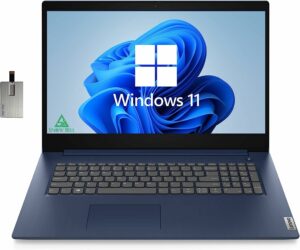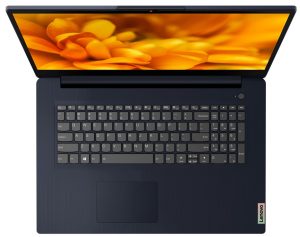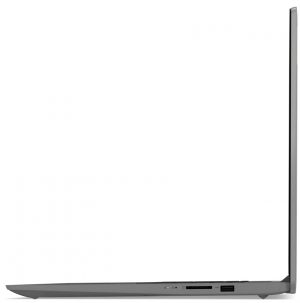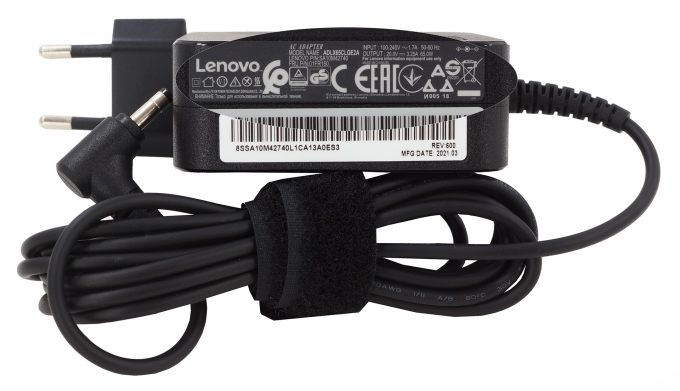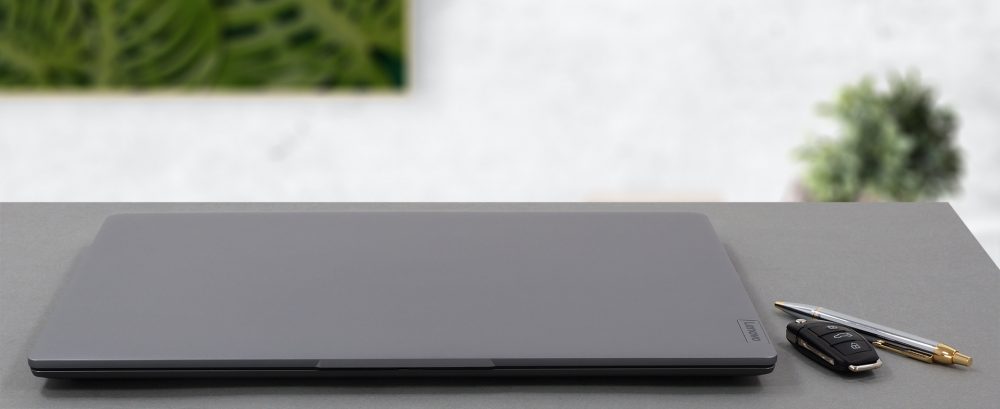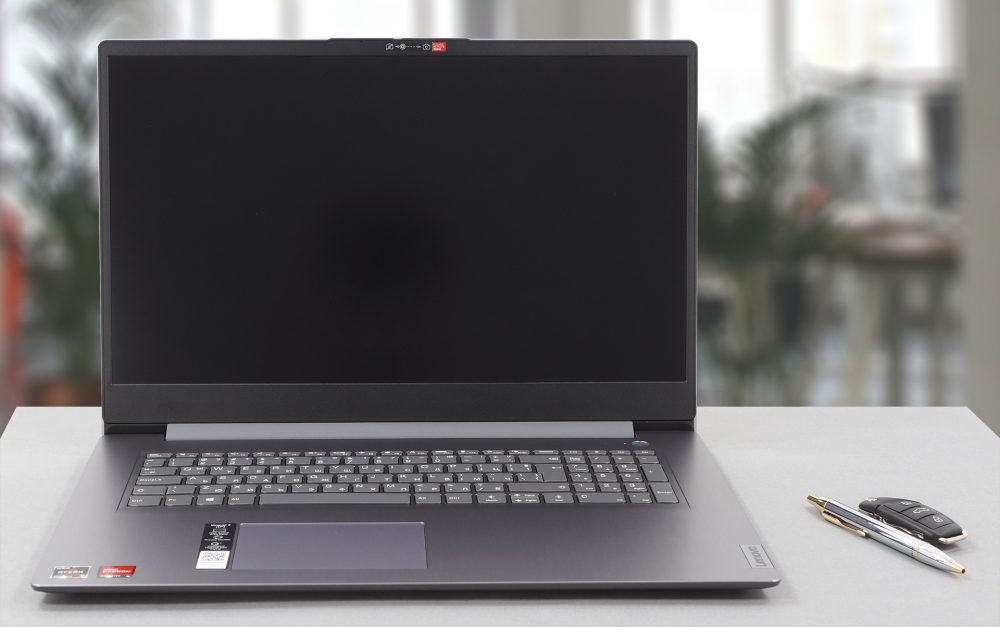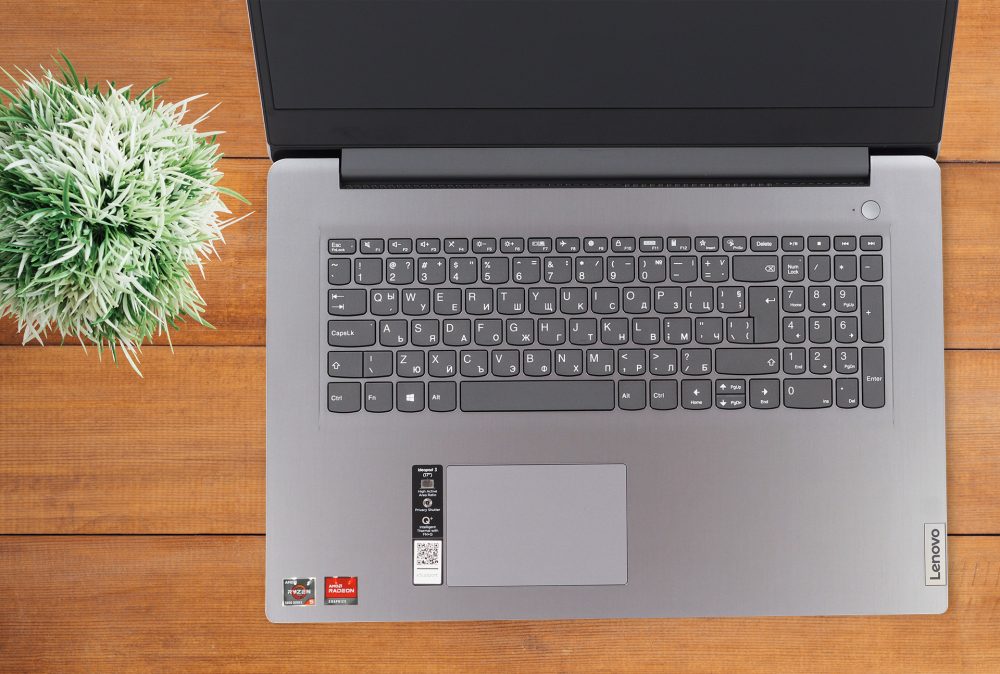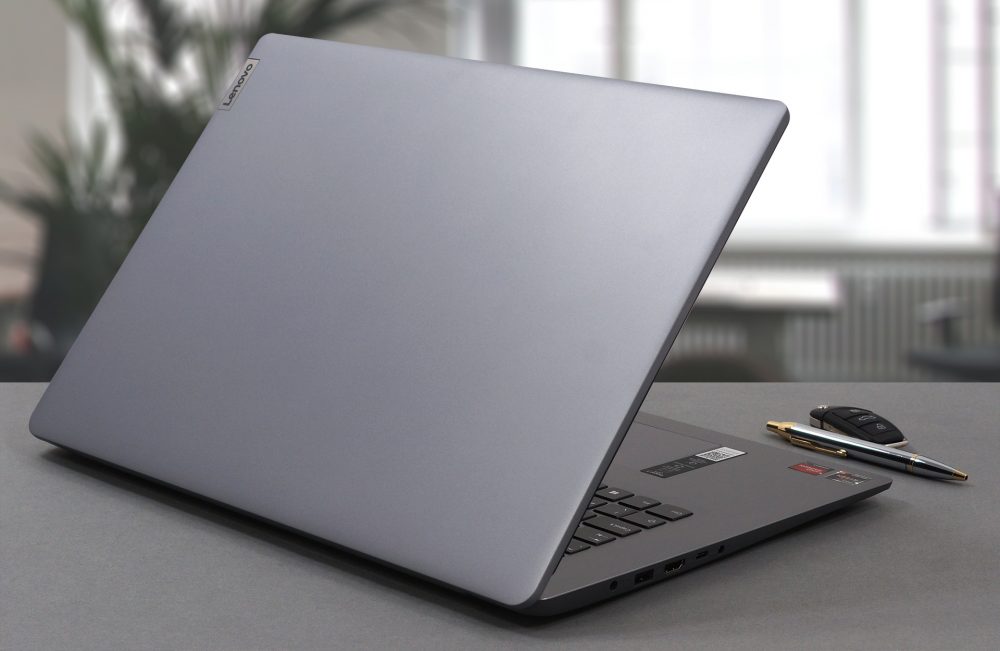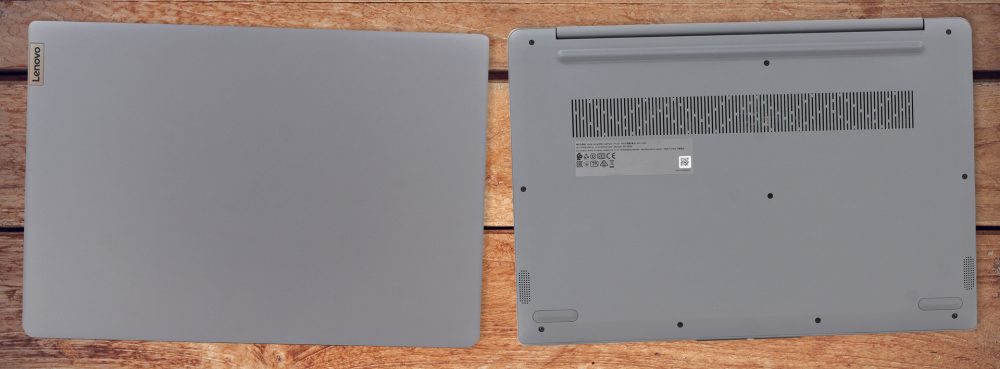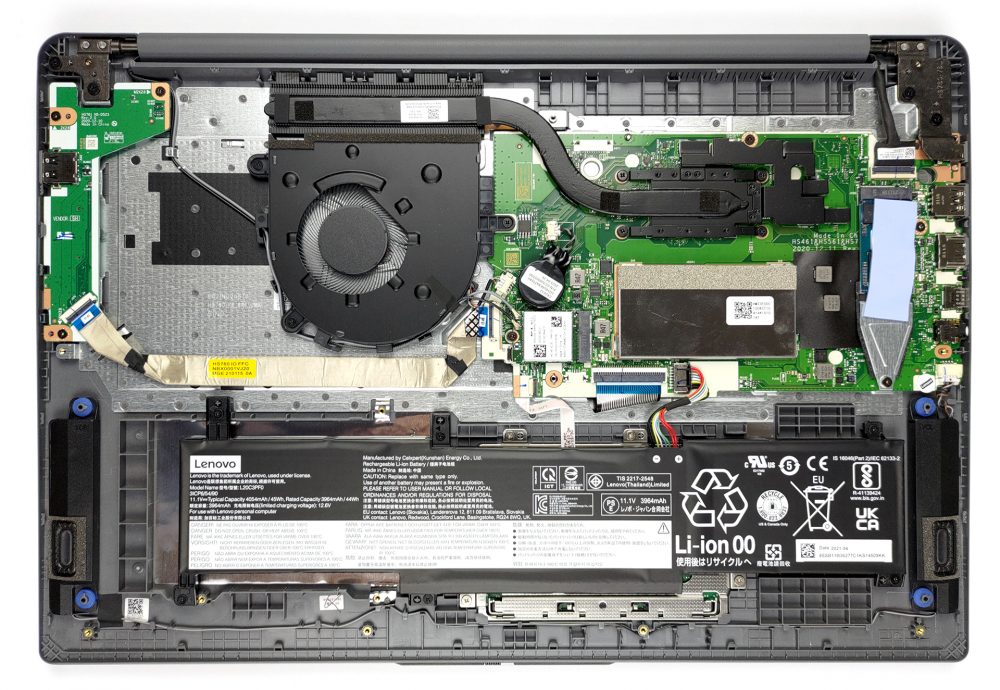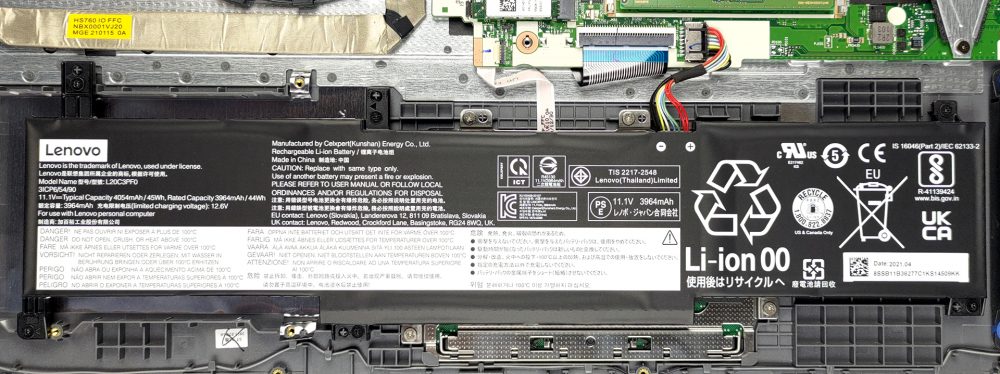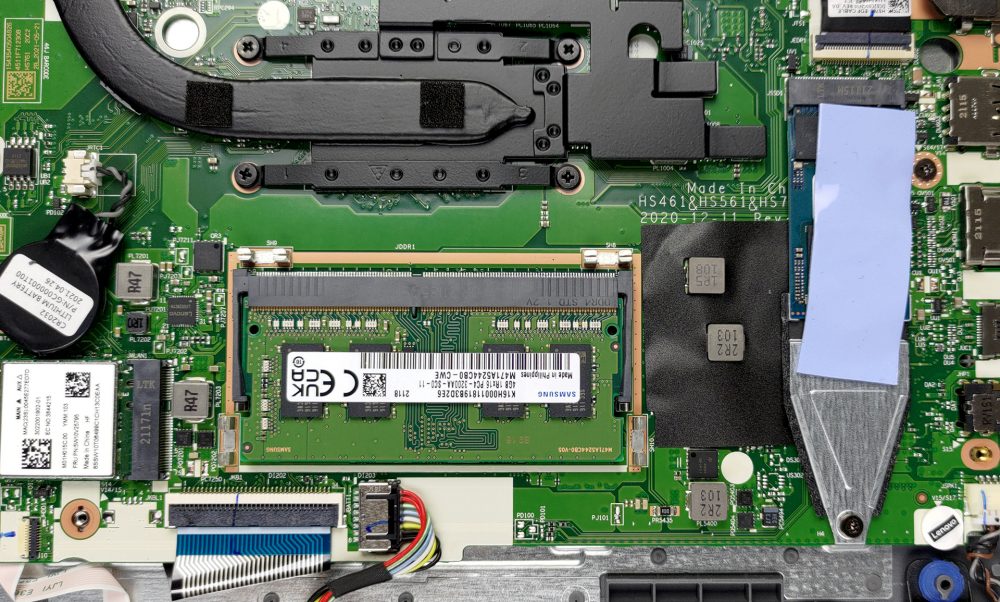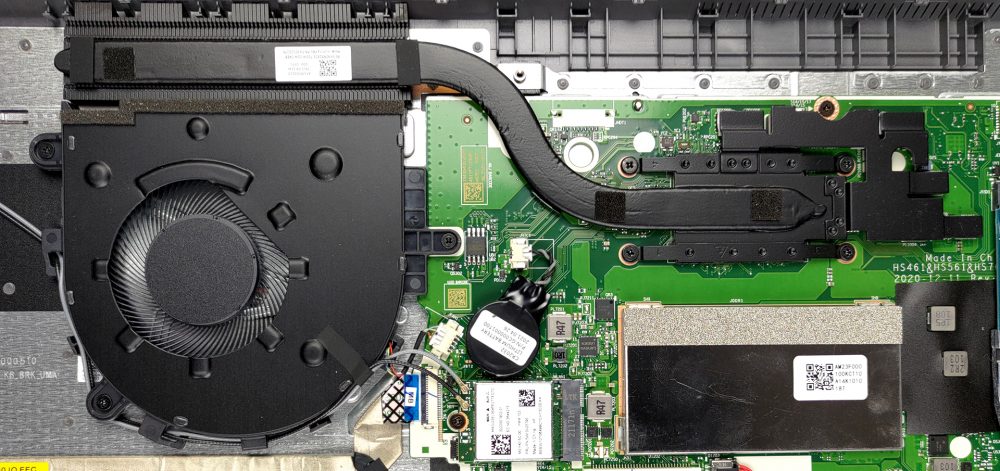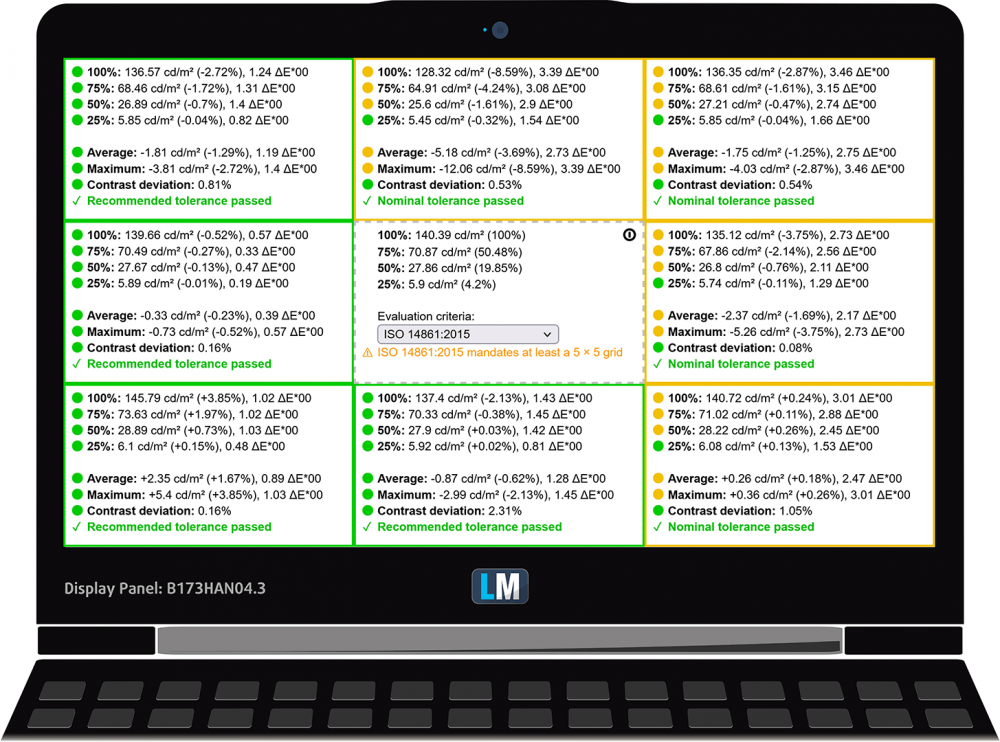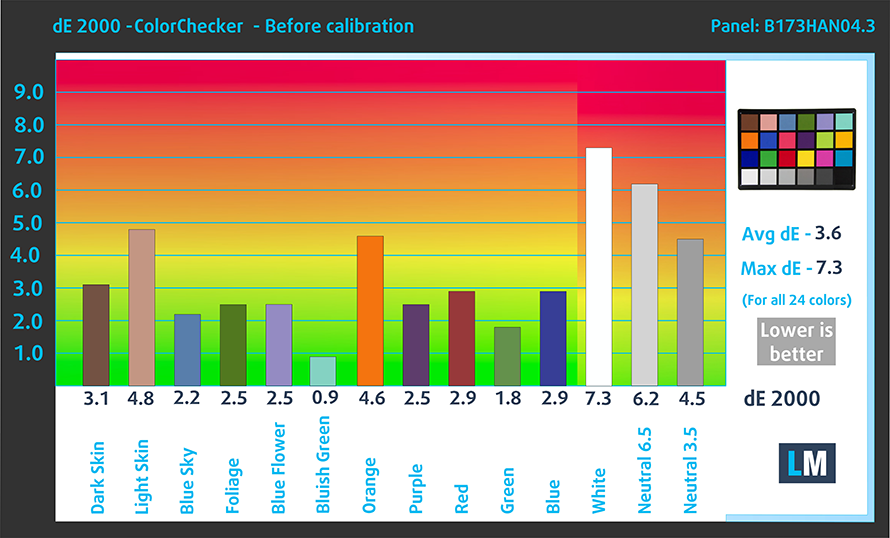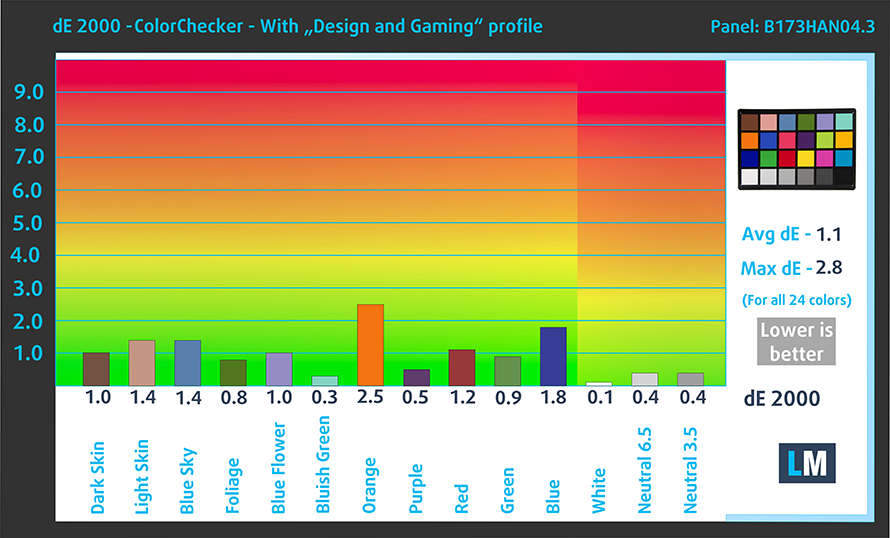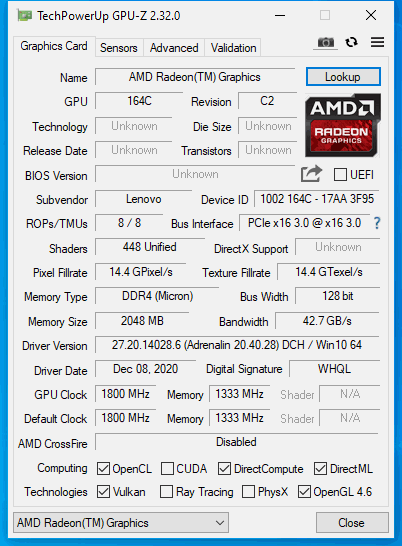Lenovo IdeaPad 3 (17″, 2021) review – a jewel in the budget computing
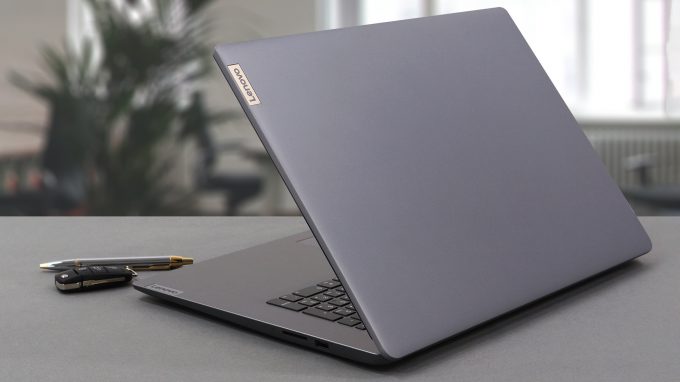 Since last year, work and learn from home notebooks were basically brought out of stock from all the people in need. And in the midst of a global crisis, these notebooks are still super important for the well-being of both users and manufacturers. This is why the IdeaPad 3 (17″, 2021) is more than just a budget-conscious 17-incher.
Since last year, work and learn from home notebooks were basically brought out of stock from all the people in need. And in the midst of a global crisis, these notebooks are still super important for the well-being of both users and manufacturers. This is why the IdeaPad 3 (17″, 2021) is more than just a budget-conscious 17-incher.
Looking at the specs sheet we see the presence of the Ryzen 5 5500U, and the Ryzen 7 5700U, which indicate a good potential in terms of performance. Screen-wise, there are two options – a 1600×900 TN panel, and a 1920×1080 IPS one.
Without wasting more time, let’s take a dive into the full specs sheet of this machine, and then check out its exterior. After that, we are going to disassemble it, before moving to the synthetic and real-world benchmarks.
You can check the prices and configurations in our Specs System: https://laptopmedia.com/series/lenovo-ideapad-3-17-2021/
Contents
Specs Sheet
- CPU
- Intel Core i5-1155G7 #188 in Top CPUs Intel Core i5-1135G7 #198 in Top CPUs Intel Core i3-1115G4 #214 in Top CPUs AMD Ryzen 7 5700U #145 in Top CPUs AMD Ryzen 5 5625U #163 in Top CPUs AMD Ryzen 5 5500U #174 in Top CPUs AMD Ryzen 3 5300U #193 in Top CPUs AMD Ryzen 3 3250U #229 in Top CPUsAMD Ryzen 5 3500U
- GPU
- Intel UHD Graphics Xe G4 (48EU) #253 in Top GPUs Intel Iris Xe Graphics G7 (80EU) #234 in Top GPUs AMD Radeon RX Vega 8 (R4000/5000, 15W) #232 in Top GPUs AMD Radeon RX Vega 8 (R2000/3000, 15W) #252 in Top GPUs AMD Radeon RX Vega 7 (R4000/5000, 15W) #242 in Top GPUs AMD Radeon RX Vega 6 (R4000/5000, 15W) #251 in Top GPUs AMD Radeon RX Vega 3 #260 in Top GPUs
- HDD/SSD
- up to 2000GB SSD + up to 1000GB HDD
- M.2 Slot
- 1x M.2 NVMe slot See photo
- RAM
- up to 36GB
- OS
- Windows 11 Home, Windows 11 Pro, Windows 10 Pro, Windows 10 Home, No OS
- Battery
- 38Wh, 45Wh
- Body material
- Plastic / Polycarbonate
- Dimensions
- 399 x 274 x 19.9 mm (15.71" x 10.79" x 0.78")
- Weight
- 2.10 kg (4.6 lbs)
- Ports and connectivity
- 1x USB Type-A
- 2.0
- 1x USB Type-A
- 3.2 Gen 1 (5 Gbps)
- 1x USB Type-C
- 3.2 Gen 1 (5 Gbps)
- HDMI
- 1.4b
- Card reader
- SD, SDHC, SDXC, MMC
- Ethernet LAN
- Wi-Fi
- 802.11ax
- Bluetooth
- 5.1
- Audio jack
- 3.5mm Combo Jack
- Features
- Fingerprint reader
- optional
- Web camera
- HD
- Backlit keyboard
- optional
- Microphone
- Dual Array Microphone
- Speakers
- 2x 1.5W, Dolby Audio
- Optical drive
- optional
- Security Lock slot
All Lenovo IdeaPad 3 (17″, 2021) configurations
What’s in the box?
Expectedly, the packaging of this device is nothing to write home about. Besides the laptop, you will find only the mandatory paperwork and a 65W power brick.
Design and construction
Unsurprisingly, given the price range, the IdeaPad 3 (17″, 2021) is made entirely out of plastic. Its huge footprint is more susceptible to flexes. On the other hand, the device is incredibly lightweight at 2.10 kg and has a profile of 19.9mm. Needless to say, that this is great for a 17-incher.
Unfortunately, the lid cannot be opened with a single hand. On the other hand, you get relatively slim bezels and an HD Web camera with its own privacy shutter.
Then, let’s take a look at the base. This device’s sheer area is big enough, so you can place your lunch right next to the touchpad, and still have enough space to use the keyboard. Jokes aside, the keyboard feels clicky and homogenous for every single key. Also, there is a NumberPad section but no backlight. In addition to that, we observed quite a severe deck flex spanning through the entire area of the keyboard, and the key travel seems to be a bit short.
On the bright side, the Power button has an optional fingerprint reader embedded into it. Respectively, the touchpad feels relatively smooth and accurate. It is definitely not the best out there, but considering the price of the laptop, we are happy with it.
Now, if you turn the laptop upside down, you will find the speaker cutouts and the ventilation grill. As for the hot air – it is blown away from the chassis through a slot in between the lid and the base.
Ports
On the left side, you have the charging plug, a USB Type-A 3.2 (Gen. 1) port, an HDMI 1.4b connector, a USB Type-C 3.2 (Gen. 1) port, and an audio jack. Then, on the right, there is a USB Type-A 2.0 port, and an SD card reader.
Disassembly, upgrade options and maintenance
To get inside of this laptop, you need to undo all 10 Phillips-head screws.
This device is sold with either a 38 or 45Wh battery pack.
There is one SODIMM slot that works in conjunction with the soldered 4GB of RAM. Additionally, you get one M.2 slot for storage, as well as an optional 2.5-inch SATA device, depending on the battery size.
In terms of cooling, there is one heat pipe and a medium-sized fan. Also, there are some cooling elements on the VRMs.
Display quality
Lenovo IdeaPad 3 (17″, 2021) is equipped with a Full HD IPS panel, model number AUO B173HAN04.3 (AUO439D). Its diagonal is 17.3″ (43.94 cm), and the resolution 1920 х 1080 pixels. The screen ratio is 16:9, and we are looking at a pixel density of – 127 ppi, and a pitch of 0.2 х 0.2 mm. The screen turns into Retina when viewed at distance equal to or greater than 69cm (27″) (from this distance one’s eye stops differentiating the separate pixels, and it is normal for looking at a laptop).
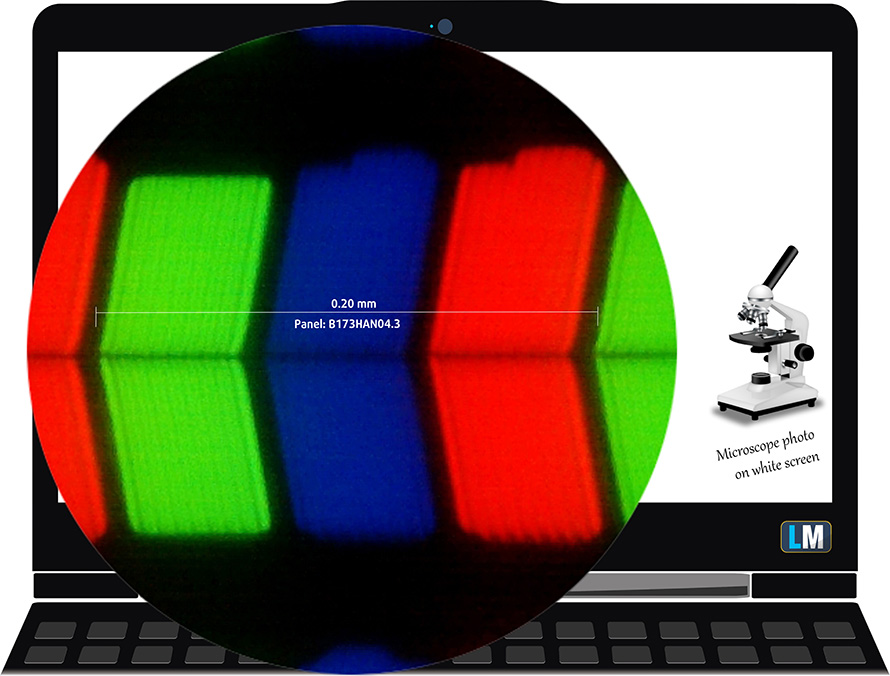
Viewing angles are comfortable. We offer images at 45° to evaluate image quality.

The measured maximum brightness of 327 nits in the middle of the screen and also 321 nits as an average for the whole area, with a maximum deviation of 8%. The Correlated Color Temperature on a white screen is 7280K – colder than the optimal for the sRGB standard of 6500K.
In the illustration below you can see how the display performs from a uniformity perspective. In other words, the leakage of light from the light source.
Values of dE2000 over 4.0 should not occur, and this parameter is one of the first you should check if you intend to use the laptop for color-sensitive work. The contrast ratio is good – 1150:1.
To make sure we are on the same page, we would like to give you a little introduction to the sRGB color gamut and the Adobe RGB. To start, there’s the CIE 1976 Uniform Chromaticity Diagram that represents the visible specter of colors by the human eye, giving you a better perception of the color gamut coverage and the color accuracy.
Inside the black triangle, you will see the standard color gamut (sRGB) that is being used by millions of people on HDTV and on the web. As for the Adobe RGB, this is used in professional cameras, monitors, etc for printing. Colors inside the black triangle are used by everyone and this is the essential part of the color quality and color accuracy of a mainstream notebook.
Still, we’ve included other color spaces like the famous DCI-P3 standard used by movie studios, as well as the digital UHD Rec.2020 standard. Rec.2020, however, is still a thing of the future and it’s difficult for today’s displays to cover that well. We’ve also included the so-called Michael Pointer gamut, or Pointer’s gamut, which represents the colors that naturally occur around us every day.
The yellow dotted line shows Lenovo IdeaPad 3 (17″, 2021)’s color gamut coverage.
Its display covers 97% of the sRGB/ITU-R BT.709 (web/HDTV standard) in CIE1976.
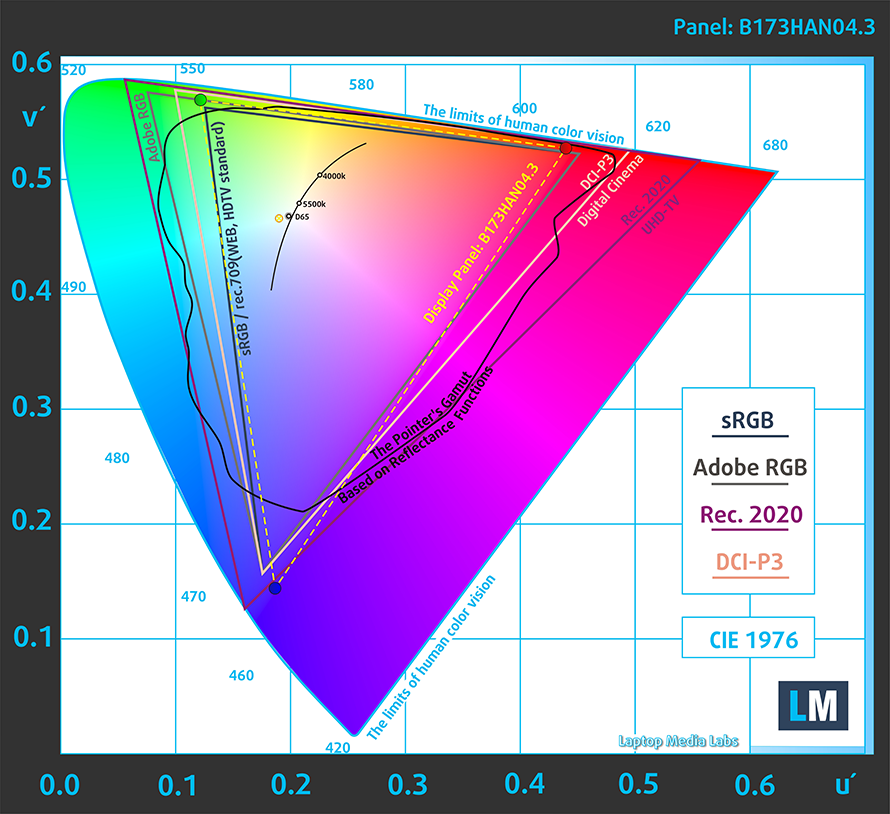
Our “Design and Gaming” profile delivers optimal color temperature (6500K) at 140 cd/m2 luminance and sRGB gamma mode.
We tested the accuracy of the display with 24 commonly used colors like light and dark human skin, blue sky, green grass, orange, etc. You can check out the results at factory condition and also, with the “Design and Gaming” profile.
Below you see the scores of Lenovo IdeaPad 3 (17″, 2021) with the “Gaming and Web design” profile.
The next figure shows how well the display is able to reproduce really dark parts of an image, which is essential when watching movies or playing games in low ambient light.
The left side of the image represents the display with stock settings, while the right one is with the “Gaming and Web Design” profile activated. On the horizontal axis, you will find the grayscale, and on the vertical axis – the luminance of the display. On the two graphs below you can easily check for yourself how your display handles the darkest nuances but keep in mind that this also depends on the settings of your current display, the calibration, the viewing angle, and the surrounding light conditions.
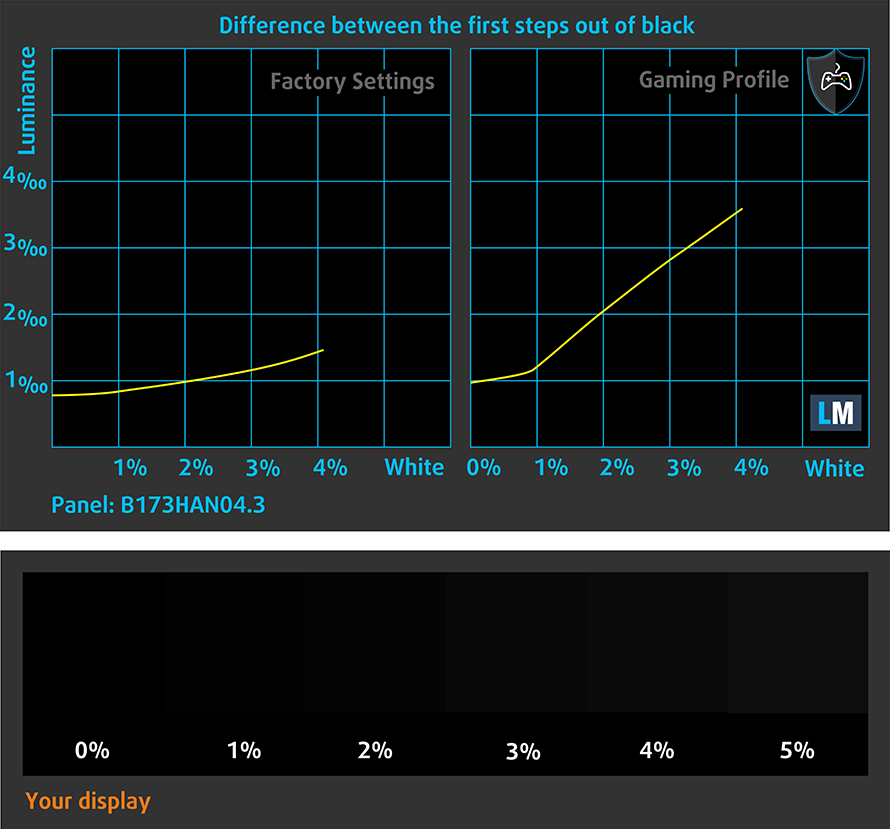
Response time (Gaming capabilities)
We test the reaction time of the pixels with the usual “black-to-white” and “white-to-black” method from 10% to 90% and vice versa.
We recorded Fall Time + Rise Time = 23 ms.
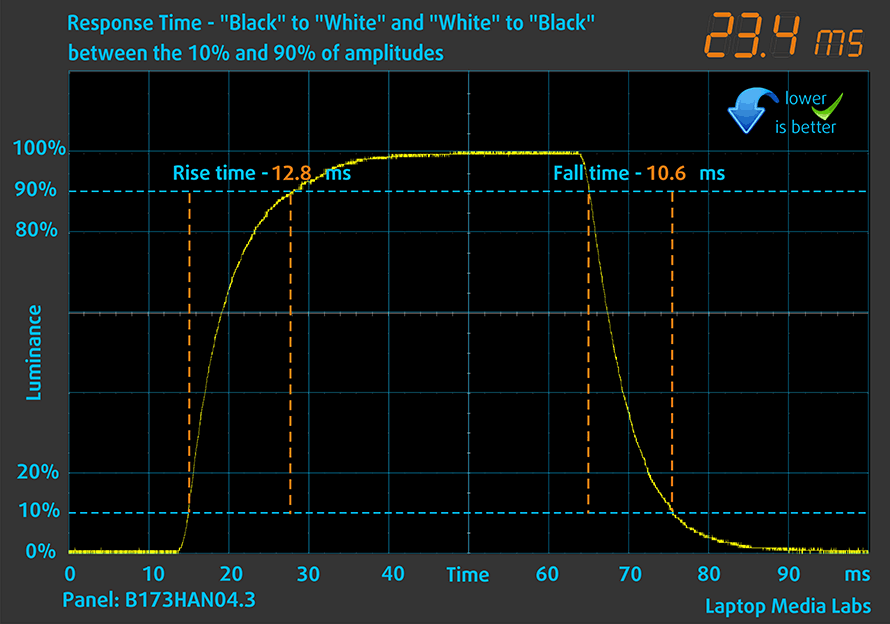
After that, we test the reaction time of the pixels with the usual “Gray-to-Gray” method from 50% White to 80% White and vice versa between 10% and 90% of the amplitude.
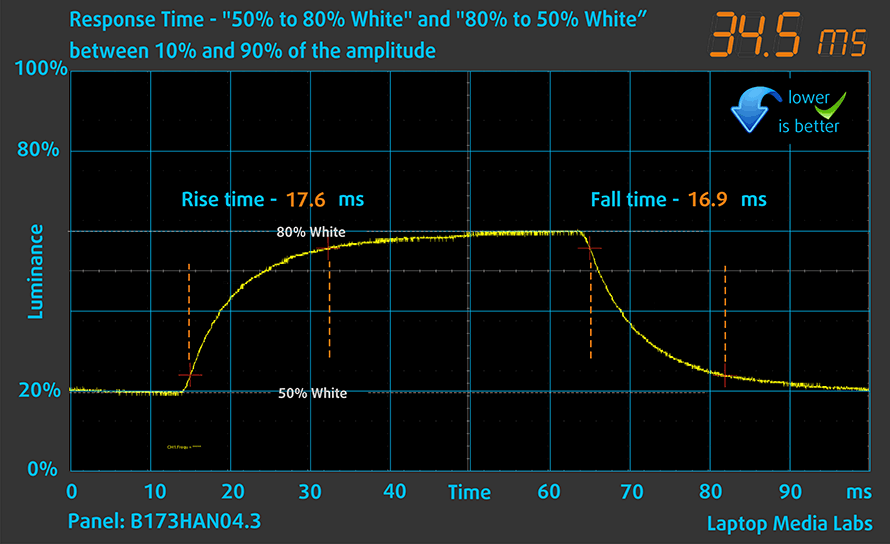
PWM (Screen flickering)
Pulse-width modulation (PWM) is an easy way to control monitor brightness. When you lower the brightness, the light intensity of the backlight is not lowered, but instead turned off and on by the electronics with a frequency indistinguishable to the human eye. In these light impulses, the light/no-light time ratio varies, while brightness remains unchanged, which is harmful to your eyes. You can read more about that in our dedicated article on PWM.
The backlight of the Lenovo IdeaPad 3 (17″, 2021) doesn’t use PWM to adjust its levels of brightness. This means the display is comfortable for use, without presenting any excessive eye strain in this aspect.
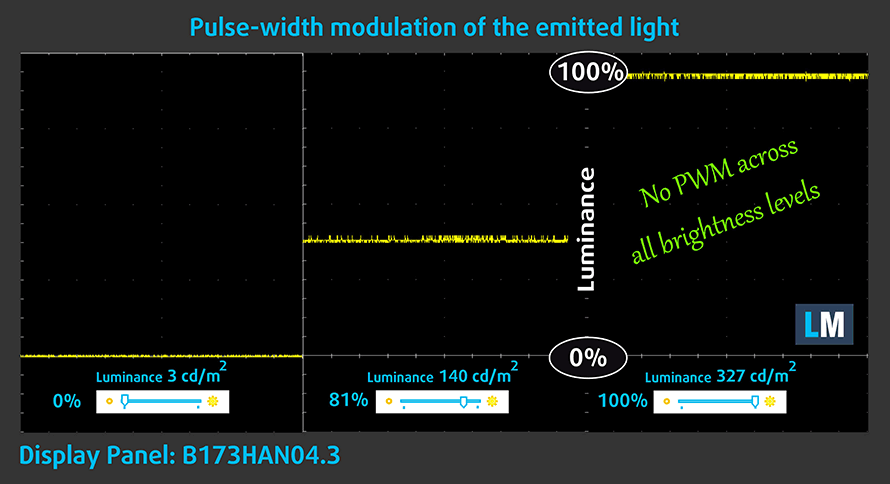
Blue light emissions
Installing our Health-Guard profile not only eliminates PWM but also reduces the harmful Blue Light emissions while keeping the colors of the screen perceptually accurate. If you’re not familiar with the Blue light, the TL;DR version is – emissions that negatively affect your eyes, skin, and your whole body. You can find more information about that in our dedicated article on Blue Light.
Buy our profiles
Since our profiles are tailored for each individual display model, this article and its respective profile package are meant for Lenovo IdeaPad 3 (17″, 2021) configurations with 17.3″ FHD IPS AUO B173HAN04.3 (AUO439D).
*Should you have problems with downloading the purchased file, try using a different browser to open the link you’ll receive via e-mail. If the download target is a .php file instead of an archive, change the file extension to .zip or contact us at [email protected].
Read more about the profiles HERE.
In addition to receiving efficient and health-friendly profiles, by buying LaptopMedia's products you also support the development of our labs, where we test devices in order to produce the most objective reviews possible.

Office Work
Office Work should be used mostly by users who spend most of the time looking at pieces of text, tables or just surfing. This profile aims to deliver better distinctness and clarity by keeping a flat gamma curve (2.20), native color temperature and perceptually accurate colors.

Design and Gaming
This profile is aimed at designers who work with colors professionally, and for games and movies as well. Design and Gaming takes display panels to their limits, making them as accurate as possible in the sRGB IEC61966-2-1 standard for Web and HDTV, at white point D65.

Health-Guard
Health-Guard eliminates the harmful Pulse-Width Modulation (PWM) and reduces the negative Blue Light which affects our eyes and body. Since it’s custom tailored for every panel, it manages to keep the colors perceptually accurate. Health-Guard simulates paper so the pressure on the eyes is greatly reduced.
Get all 3 profiles with 33% discount
Sound
Lenovo IdeaPad 3 (17″, 2021)’s speakers produce a sound of good quality. However, the lows have some deviations from clarity.
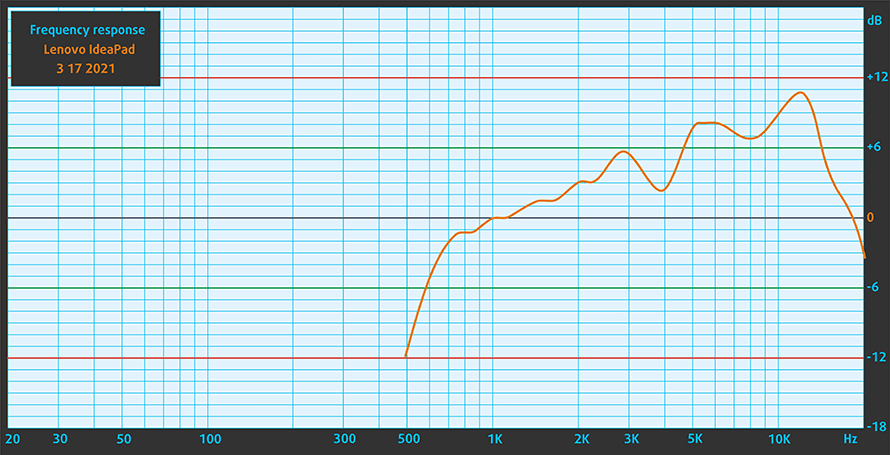
Drivers
All of the drivers and utilities for this notebook can be found here: https://pcsupport.lenovo.com/us/en/products/laptops-and-netbooks/3-series/ideapad-3-17alc6/downloads/driver-list
Battery
Now, we conduct the battery tests with Windows Better performance setting turned on, screen brightness adjusted to 120 nits, and all other programs turned off except for the one we are testing the notebook with. This laptop’s 45Wh battery pack lasts for 9 hours and a half of Web browsing, 9 hours and 3 minutes of video playback, and two hours and five minutes of gaming.
In order to simulate real-life conditions, we used our own script for automatic web browsing through over 70 websites.
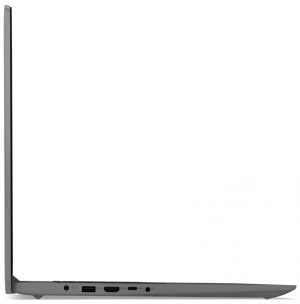

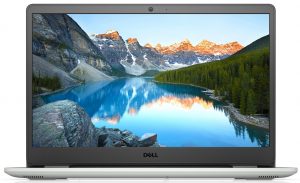
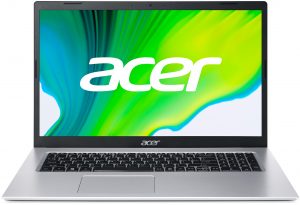
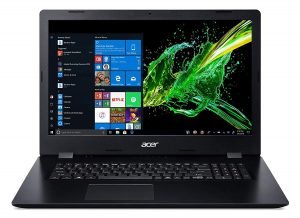
For every test like this, we use the same video in HD.





We use F1 2017’s built-in benchmark on loop in order to simulate real-life gaming.





CPU options
This model can be found with a Ryzen 3 3250U, Ryzen 3 5300U, Ryzen 5 5500U, and Ryzen 7 5700U.
Results are from the Cinebench R23 CPU test (the higher the score, the better)
Results are from our Photoshop benchmark test (the lower the score, the better)
GPU options
Since there are no dedicated graphics options, you only get the integrated solutions from AMD.
Results are from the 3DMark: Time Spy (Graphics) benchmark (higher the score, the better)
Results are from the 3DMark: Fire Strike (Graphics) benchmark (higher the score, the better)
Results are from the Unigine Superposition benchmark (higher the score, the better)
Gaming tests

| CS:GO | HD 1080p, Low (Check settings) | HD 1080p, Medium (Check settings) | HD 1080p, MAX (Check settings) |
|---|---|---|---|
| Average FPS | 112 fps | 79 fps | 56 fps |

| DOTA 2 | HD 1080p, Low (Check settings) | HD 1080p, Normal (Check settings) | HD 1080p, High (Check settings) |
|---|---|---|---|
| Average FPS | 113 fps | 75 fps | 43 fps |
Temperatures and comfort
Max CPU load
In this test we use 100% on the CPU cores, monitoring their frequencies and chip temperature. The first column shows a computer’s reaction to a short load (2-10 seconds), the second column simulates a serious task (between 15 and 30 seconds), and the third column is a good indicator of how good the laptop is for long loads such as video rendering.
Average core frequency (base frequency + X); CPU temp.
| AMD Ryzen 5 5500U (15W TDP) | 0:02 – 0:10 sec | 0:15 – 0:30 sec | 10:00 – 15:00 min |
|---|---|---|---|
| Lenovo IdeaPad 3 (17″, 2021) | 2.94 GHz (B+40%) @ 67°C @ 25W | 2.78 GHz (B+32%) @ 72°C @ 22W | 2.61 GHz (B+24%) @ 67°C @ 18W |
| Acer Aspire 7 (A715-42G) | 3.18 GHz (B+51%) @ 62°C @ 36W | 3.16 GHz (B+50%) @ 65°C @ 35W | 2.88 GHz (B+37%) @ 62°C @ 25W |
| ASUS ZenBook 13 UM325 | 3.00 GHz (B+43%) @ 62°C @ 29W | 2.54 GHz (B+21%) @ 67°C @ 19W | 2.47 GHz (B+18%) @ 69°C @ 17W |
This test only shows how well are these processors optimized. At the end of the 15-minute torture, the IdeaPad 3 (17″, 2021) finishes at 2.61 GHz at only 67°C
Comfort during full load
During these extreme conditions, the fan was spinning quite rapidly but wasn’t too loud by any means. Respectively, the hottest spot we measured was about 42°C.
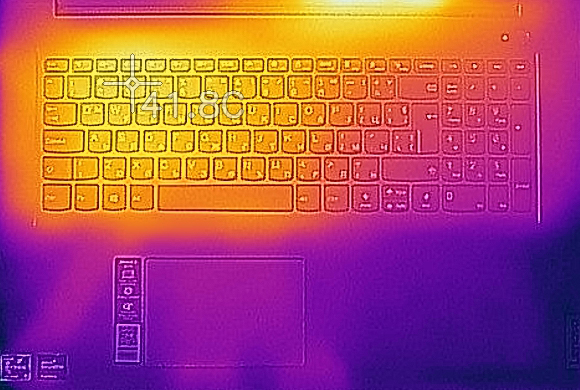
Verdict
 At the end of the day, we were really impressed by this machine. And no, it doesn’t have a super-strong chassis, nor it uses premium materials for its build. In fact, it couldn’t look more ordinary than this. However, it does more than what we would ever ask from a laptop in this price range.
At the end of the day, we were really impressed by this machine. And no, it doesn’t have a super-strong chassis, nor it uses premium materials for its build. In fact, it couldn’t look more ordinary than this. However, it does more than what we would ever ask from a laptop in this price range.
First of all, it has a commendable battery life (with the larger 45Wh unit). We got 9 hours and a half of Web browsing, and about 9 hours and 3 minutes of video playback. Combine this with excellent performance and decent cooling, and you get one extremely capable home device.
Lenovo IdeaPad 3 (17″, 2021)’s IPS panel has a Full HD resolution, good contrast ratio, and comfortable viewing angles. Also, its backlight doesn’t use PWM for brightness adjustment. Now, what makes this device truly impressive is its color coverage of 97% of the sRGB gamut. Moreover, our Gaming and Web design profile brings the color accuracy to standard-matching values, which is incredible for a laptop of this price range.
So basically, you get a laptop for home office or studying, which by chance can be used for professional work. Plus, it has an SD card reader, which means even photographers would be happy to use it.
By the way, if you happen to have the smaller battery pack, you shouldn’t rush in to return the device. Instead, you can make use of the opened space from the smaller battery, and put a 2.5-inch SATA drive for a larger movie library.
If you are looking for the perfect laptop for a limited budget, the IdeaPad 3 (17″, 2021) may not be a perfect solution, but it is definitely one of the best choices out there.
You can check the prices and configurations in our Specs System: https://laptopmedia.com/series/lenovo-ideapad-3-17-2021/
Pros
- 1x SODIMM, 1x M.2 PCIe x4, 1x 2.5-inch SATA (optional)
- Optional fingerprint reader
- 97% sRGB coverage and accurate color representation with our Gaming and Web design profile (AUO B173HAN04.3 (AUO439D))
- No PWM (AUO B173HAN04.3 (AUO439D))
- SD card slot
- Surprisingly good performance
- Good battery life
Cons
- Plastic build with mediocre quality
- Unstable hinges
